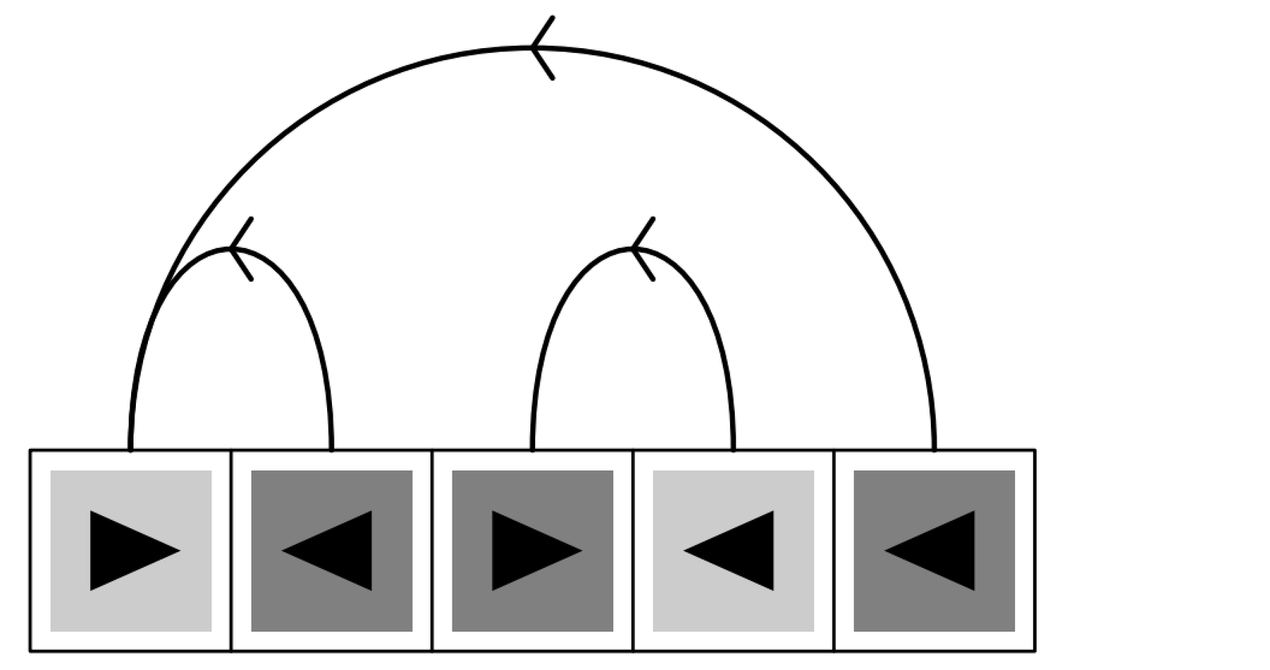alternates between 0 and 1, but the second register progressively grows. And finally, in the third machine both registers grow.
But in all these three examples, the overall behavior is essentially repetitive. And indeed it turns out that among the 10,552 possible register machines with programs that are four or fewer instructions long, not a single one exhibits more complicated behavior.
However, with five instructions, slightly more complicated behavior becomes possible, as the picture below shows. But even in this example, there is still a highly regular nested structure.
And it turns out that even with up to seven instructions, none of the 276,224,376 programs that are possible lead to substantially more complicated behavior. But with eight instructions, 126 out of the 11,019,960,576 possible programs finally do show more complicated behavior. The next page gives an example.
 |   |
A register machine that shows nested rather than strictly repetitive behavior. The register machine has a program which is five instructions long. It turns out that this program is one of only two (which differ just by interchange of the first and second registers) out of the 248,832 possible programs with five instructions that yield anything other than strictly repetitive behavior.